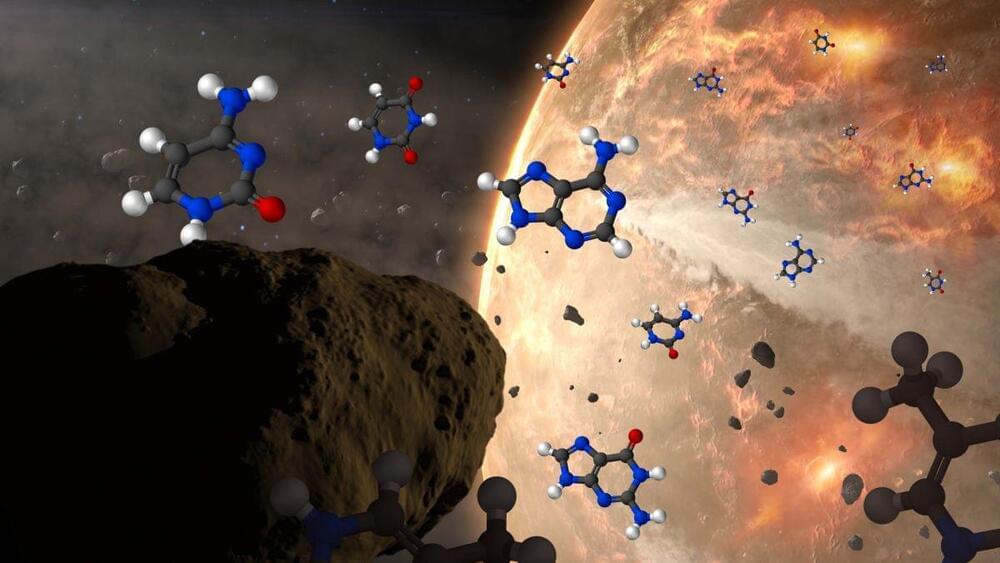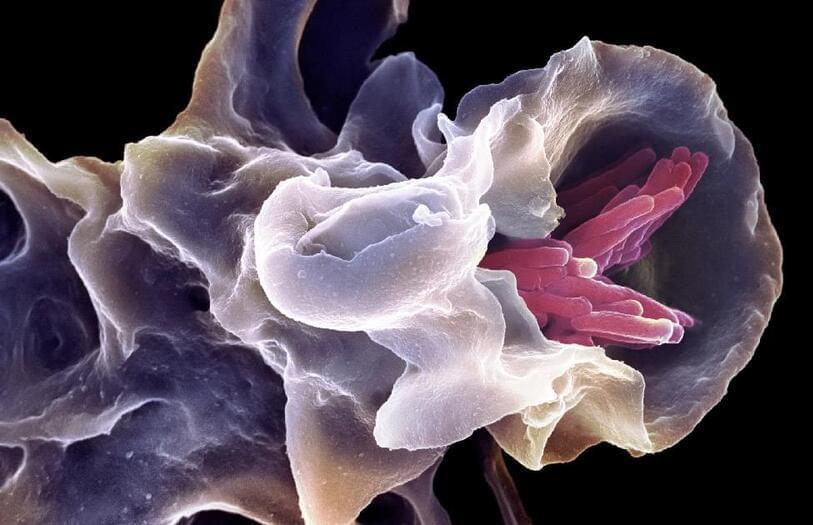Adept, founded by a team of accomplished AI researchers and data scientists, aims to build AI systems that can understand and automate any software process.
Get the latest international news and world events from around the world.

Meteorites could have brought all 5 genetic ‘letters’ of DNA to early Earth
These key building blocks of life were found in space rocks, scientists confirm.
Key building blocks of DNA that previous research mysteriously failed to discover in meteorites have now been discovered in space rocks, suggesting that cosmic impacts might once have helped deliver these vital ingredients of life to ancient Earth.
DNA is made of four main building blocks — nucleobases called adenine (A), thymine (T), cytosine © and guanine (G). DNA’s sister molecule, RNA, also uses A, C and G, but swaps out thymine for uracil (U). Scientists wondering whether meteorites might have helped deliver these compounds to Earth have previously looked for nucleobases in space rocks, but until now, scientists had only detected A and G in space rocks, and not T, C or U.
Exploring Space with NASA Astronaut Victor Glover (Live from the Smithsonian)
NASA astronaut Victor Glover served as the pilot on NASA’s SpaceX Crew-1 mission and spent six months on the International Space Station, where he worked on scientific investigations, technology demonstrations, and completed four spacewalks. He’ll speak live from the Smithsonian National Museum of African American History and Culture about preparing to be an astronaut, his recent mission, and the future of space travel including Artemis missions to the Moon.
About Victor Glover: https://www.nasa.gov/astronauts/biographies/victor-j-glover/biography

Russia’s Attack on Ukraine is Making Everything on this Planet Worse
James McCall SpringerHmmm… So quantum computing systems aren’t close to being perfected BUT they’re being used for ransomware attacks?
Is “bleepingcomouter” a bs sensationalist media producer like Futurism?
Len Rosen shared a link.
The “special operation” as Russia calls it has come with a threat of nuclear war, and consequences for food and energy security for many.
Fertility crisis: Is modern life making men infertile? — BBC REEL
We all know man-made chemicals are damaging ecosystems across the planet. But could certain chemicals also be negatively affecting human fertility?
Dr Shanna Swan, an environmental and reproductive epidemiologist at Mount Sinai Hospital in New York and the author of Count Down, predicts that current trends could not continue much longer without threatening human survival.
Video by Izabela Cardoso & Fernando Teixeira.
Executive Producer: Camelia Sadeghzadeh.
#bbcreel #bbc #bbcnews


Israeli astronaut Stibbe returns safely to Earth after mission to space station
Members of first all-private mission to ISS splashdown off the Florida coast; Israeli president congratulates Eytan Stibbe on his journey.

Microsoft’s $15 billion cybersecurity business is giving investors new reason for optimism
Nadella told analysts on an earnings call that the operation had reached $10 billion in annual revenue and was “up more than 40%” year over year. In other words, it was outpacing every other major Microsoft product.
The remarks were revelatory. Nadella was known for reviving Microsoft, overseeing a fivefold expansion in market cap by that point in his seven years at the helm. That growth was largely based on turning Microsoft’s cloud business into a more serious threat to Amazon Web Services in a giant market.
By letting investors in on the enormity of Microsoft’s security business, Nadella was casually uncovering a powerful growth engine. Total revenue across the company was up just 14% from the prior year. And by way of comparison, Palo Alto Networks, one of the largest pure-play security software companies, delivered 21% revenue growth over roughly the same period, on a base smaller than $4 billion.

Scientists model landscape formation on Titan, revealing an Earth-like alien world
Saturn’s moon Titan looks very much like Earth from space, with rivers, lakes, and seas filled by rain tumbling through a thick atmosphere. While these landscapes may look familiar, they are composed of materials that are undoubtedly different—liquid methane streams streak Titan’s icy surface and nitrogen winds build hydrocarbon sand dunes.
The presence of these materials—whose mechanical properties are vastly different from those of silicate-based substances that make up other known sedimentary bodies in our solar system—makes Titan’s landscape formation enigmatic. By identifying a process that would allow for hydrocarbon-based substances to form sand grains or bedrock depending on how often winds blow and streams flow, Stanford University geologist Mathieu Lapôtre and his colleagues have shown how Titan’s distinct dunes, plains, and labyrinth terrains could be formed.
Titan, which is a target for space exploration because of its potential habitability, is the only other body in our solar system known to have an Earth-like, seasonal liquid transport cycle today. The new model, published in Geophysical Research Letters April 25, shows how that seasonal cycle drives the movement of grains over the moon’s surface.